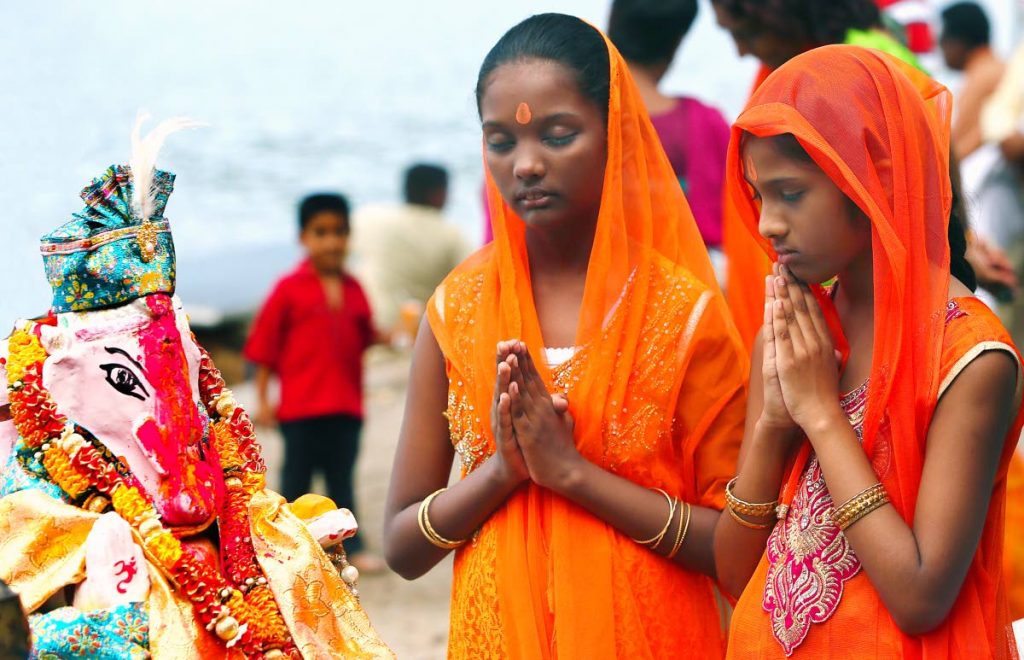The culture of the trickster

In my little world where little sparks can set huge fires, I should say that it was an interestingly, exciting week.
I had been reading Elizabeth Gilbert’s Big Magic: Creative Living Beyond Fear over the past few weeks. It was the day after the Ganesh Utsav celebrations which took place on Sunday last, that I came to the chapter entitled, "The Martyr vs the Trickster". There was an immediate link to the image of Ganesh and of course our Anancy stories. Exciting!
Two individuals had asked in the last week: "What exactly is the significance of this festival? Why is it celebrated in such a huge way?" I won’t launch into an expansive explanation of this. Suffice it to say, Ganesh or the elephant-headed god, in the Hindu pantheon, is the first deity that is propitiated before the start of anything new or before beginning any puja (prayer ceremony for want of a better English translation). Ganesh is also the divine scribe. He is generally considered to be the god of wisdom and the remover of obstacles. But, according to one study on Hindu iconography, before his inclusion into the line of deities, Ganesh was a trickster figure, the imp who placed obstacles in the paths of seekers. He disrupted but also helped.

PHOTO BY AZLAN MOHAMMED
Sunday, 23rd September, 2018.
In his very intriguing book Trickster Makes This World: Mischief, Myth and Art, Lewis Hyde writes in his introduction, “…trickster belongs to polytheism or, lacking that, he needs at least a relationship to other powers, to people and institutions and traditions that can manage the odd double attitude of both insisting that their boundaries be respected and recognising that…their liveliness depends on having those boundaries regularly disturbed.” The trickster figure should not however be interpreted as an immoral one he notes. This isn’t the conventional evil liar or thief. Rather lying or stealing in his case are in fact actions that disrupt ideas of truth and property and open the road to possibilities. The trickster is "the god of the threshold in all its forms." (Hyde, p.13)
Over time, in his evolution into a divine figure, Ganesh loses the playful, trickster quality that is present in the Krishna figure for instance. He however retains a main quality–he remains the guardian of the threshold. He is the first point of entry. He provides us with the power of discrimination and balanced mind to overcome obstacles. But should we look closer, we will note that our mind has the dual function of creating and overcoming obstacles.
Wisdom itself, represents the mental astuteness to know how and when to adapt to change. The final immersion of the clay Ganesh murti (image) that takes place in the sea or river, where it is left to melt, is acknowledgment of the impermanence of form. We write and rewrite scripts: writing–a method of giving form to an abstract idea; re-writing to re-shape. The ambivalence that is contained in life is represented even in the form of Ganesh, half man, half animal. The threshold itself is ambivalent–point of entry and exit. And so, before a beginning, which may also signal the end of something else, we invoke this spiritual energy, the creative power that enables movement. Ganesh as the power of the creative mind is the power of discernment, the power to challenge boundaries and the wisdom to see them as constantly shifting and changeable.
Gilbert’s exploration of the nurturing of the trickster in us is extremely poignant here and I call it serendipity that this chapter turned up just as I was day-dreaming about the relevance of Ganesh. "Martyr energy" Gilbert writes "is dark, solemn, macho, hierarchical, fundamentalist, austere, unforgiving, and profoundly rigid. Trickster energy is light, sly, transgender, transgressive …and endlessly shape-shifting."
And furthermore, Trickster trusts. He trusts his own ability and himself in relation to others.
In an earlier article on Ganesh, I had explored the idea of the privilege of diaspora, the idea that situated here in Trinidad, we have had the opportunity to script our own stories of arrival, settlement, migrations, culture etc. Both Republic Day and the Ganesh Utsav prompted further deliberation on this idea of re-scripting when one considers also, the general feeling of stagnation in the economy and general life that members of the public have been voicing. Should we summon the trickster to work, it provides us with the permission to employ our creative energy to disrupt accepted ideas, push boundaries, erase them and realign them. And so, as our search for a national philosophy continues, why not begin the exercise in our own lives, of questioning small ideas which we have accepted as the norm. Such personal journeys often result in changes in a nation’s perspective.
\


Comments
"The culture of the trickster"